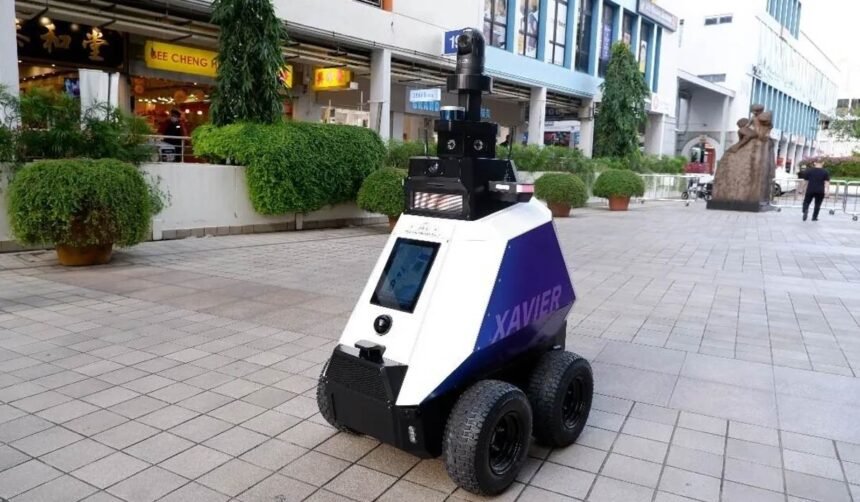Security guards have been doing the same job for decades. Walk around, check doors, maybe sit at a desk and watch monitors. It’s boring work that doesn’t pay well, and most places can barely afford decent coverage anyway. But something’s changing in how buildings handle security, and it’s not what you’d expect.
The catalyst isn’t some tech company pushing robots. It’s economics. Good security guards are hard to find and expensive to keep. Bad ones create more problems than they solve. And the traditional model of having someone walk around with a flashlight just doesn’t address modern security challenges.
Property managers are dealing with more sophisticated break-ins, liability concerns that didn’t exist twenty years ago, and insurance companies demanding better documentation of incidents. The old approaches aren’t cutting it, so they’re trying new ones.
Robots That Actually Help
The security robots showing up in buildings now bear no resemblance to those useless mall bots from the 1990s. Those things were glorified remote-control cars that played recorded announcements and got confused by wet floor signs.
Today’s versions can tell when something’s wrong. They spot people acting suspiciously, navigate around crowds without causing problems, and communicate clearly when they encounter situations that need human attention. Some recognize faces, track individuals, and coordinate with other security systems.
They work in weather that would send human guards indoors. They don’t call in sick, show up late, or spend time on personal phone calls. And they create detailed records of everything they encounter, which turns out to be incredibly valuable when things go wrong.
Understanding the benefits of security robots helps explain why building managers are willing to invest in them. Consistent patrols, immediate response to incidents, and integration with existing security systems. No drama, no excuses, just reliable coverage.
The Math Works Out
A decent security robot costs anywhere from $60,000 to $120,000. That sounds expensive until you calculate what human guards actually cost. One guard working full-time costs $40,000-$60,000 annually, plus benefits, training, and inevitable turnover costs. Want 24/7 coverage? You need at least three people, probably four to account for sick days and vacations.
The robot works continuously for years without additional salary costs. But the real savings often come from places you don’t anticipate. Better incident documentation reduces liability exposure. Consistent patrols deter more criminal activity. Detailed records speed up insurance claims and legal proceedings.
Some building managers report that insurance premium reductions alone justify a significant portion of the robot’s cost. Others find that reduced theft and vandalism pays for the system within a couple of years.
Technology That Functions
The technical problems that plagued early security robots have been largely solved. Navigation was a major issue – older models needed physical guides or got lost easily. Current systems map their environment and adapt to changes without human intervention.
Sensor technology has advanced dramatically too. Modern robots combine visual recognition, thermal imaging, audio analysis, and environmental monitoring. They detect problems that human guards miss and provide data that helps identify patterns over time.
Communication capabilities have improved as well. Security teams receive real-time alerts with video evidence, can communicate through the robot with people on-site, and access comprehensive reports that document everything the robot encounters during patrols.
Navigating the Legal Landscape
The legal side of security robots is messy, but companies are dealing with it and moving ahead anyway. Most places have tons of rules about what human guards can do, but lawmakers haven’t gotten around to writing new ones for robots yet. So property managers are basically working with whatever lawyers they can find who understand this stuff.
Liability is getting worked out as insurance companies catch up and start writing policies that actually cover robotic security. Most companies just make sure they’re talking to their insurance people and lawyers early so they don’t get blindsided later.
Privacy rules are all over the place depending on where you are, but it turns out most companies’ existing privacy policies already cover a lot of what these robots do. You just need to update them for the new technology. The main thing is figuring out what data you’re collecting, where it goes, and how long you keep it.
Safety stuff is mostly solved already. These robots have enough sensors to avoid running into people, and the programming keeps them from doing anything dangerous. It’s like any other piece of automated equipment – you maintain it properly and have clear rules about how it operates.
Regulators are slowly figuring this out as more companies start using the technology. The early adopters are helping write the playbook by sharing what works and what doesn’t with the people making the rules.
Where This Is All Heading
The robots are getting smarter pretty quickly. Better AI means they can spot more subtle problems and respond more appropriately. They’re starting to connect with building management systems too, so the same robot doing security patrols might also monitor energy usage or track maintenance needs.
Prices are dropping as more companies start making these things and competition heats up. What costs $80,000 today might be $40,000 in a few years, which puts it within reach of smaller buildings that can’t justify current prices.
The really interesting change is that security is becoming just one thing these robots do. They’re turning into building management tools that happen to provide security along with everything else. Monitor the building, optimize systems, handle maintenance requests, provide security – all from the same platform.
Buildings that get into this now are learning how to use the technology while their competitors are still trying to figure out if it’s worth it. Once the costs come down and the kinks get worked out, this stuff will probably be standard in most commercial buildings.
It’s basically a complete rethink of how building security works. The companies that figure it out early are going to have a big advantage over the ones that wait until everyone else is already doing it.







